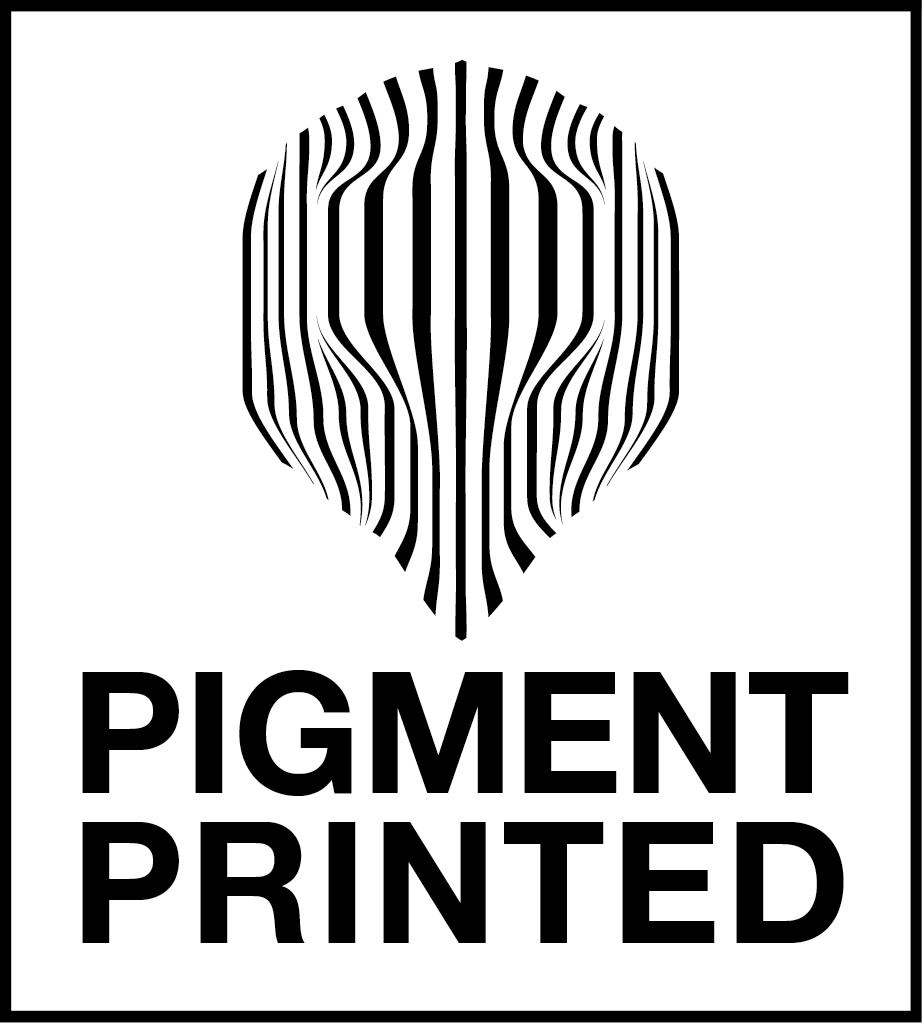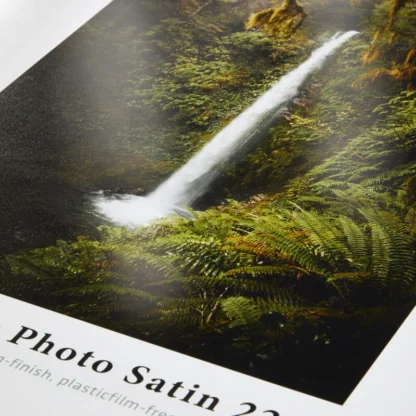Hahnemühle Sustainable Photo SATIN 220 Custom Pigment Printed
Hahnemühle Sustainable Photo SATIN 220 Giclée / Inkjet / Digital Pigment Print.220 gsm · 100% α-cellulose · bright white · satin-finish. Use coupon code PRO-PHOTO-MAG for 50% OFF!
Hahnemühle has Sustainable Satin all wrapped up!
A fresh launch from a company with the fine art heritage of Hahnemühle is always going to be a special event, and Professional Photo asked master printer Denise Ebanks from Lucid Imaging and Pigment Printed to give us her verdict on the sustainable new arrival.

Hahnemühle has Sustainable Satin all wrapped up!
IT’S SOMETIMES A little startling to realise just how far back Hahnemühle’s heritage happens to stretch. While a modern breed of fine art photographer might know the brand through its current exquisite line-up of fine art papers, the fact is that the company’s history doesn’t just pre-date the invention of photography, it actually does it by several centuries!
The company’s first paper was introduced in 1584 in fact, and 440 years on the brand is still at the cutting edge of the fine art movement, still on trend with its long-standing and much cherished environmental credentials and its products are still a natural choice for those looking to impress discerning collectors.
Despite all of this it’s really good to note that the company isn’t resting on its laurels and it’s still developing new products, the latest of which, Sustainable Photo Satin 220 gsm paper, I’ve just had the opportunity to test out. As the name suggests, this is a paper that’s been designed to be kinder to the environment, and it’s a sustainable alternative to PE-based (Polyethene) inkjet photo papers.
Most users of photo paper are not aware that photo paper has a plastic coating and cannot be recycled. The Hahnemühle Sustainable Photo Satin, is the first ‘photo’ paper without a plastic coating, no PE coat, which means it can be disposed of via normal recycling, and does not have to go to landfill. It’s this newly developed bio inkjet coating, free from plastic composites/film, that enables it to be 100% recyclable via the wastepaper cycle. Hahnemühle has 2 Paper ranges, the well known, well loved, Digital Fine Art archival range, and the Everyday Photo range, that includes classic papers including Photo Lustre, Matt Photo Fibre and the New Sustainable photo satin.
Using my 10a Swan Morton blade, I cut through the clear sticker at the top and paper sticker at the bottom to open up the new box and, upon lifting the lid, I was greeted with the standard welcome note from Hahnemühle, atop a familiar inclusion in an unfamiliar place – the grey protective sheet that accompanies sample papers, not usually seen in boxes of paper.
A surprise straight away then, namely no plastic wallet. And here the ‘sustainable’ element of the name starts to make more sense. Hahnemühle has long been serious about its environmental responsibilities, and has now taken things further by introducing a brand-new satin paper entirely devoid of plastic.
Enjoying the print
So, why use a Hahnemühle Photo Everyday Inkjet Paper? It’s down to the user experience, and there’s something very satisfying about taking your photographs offline and experiencing the tactile nature of a print. And being able to physically move a print from one position to another while sequencing offers so much more than constantly staring at a screen – it’s just something tangible to help you as a photographer get a better grasp on how everything is sitting together and it’s super for quick editing as seen in the video of Taja Lewis Boodie from The Photographers’ Gallery Develop Collective 2024.
Ordinarily, I would create a custom profile using the X-rite i1Publish Pro 3. However, on this occasion I wanted to review the paper based on the profile publicly available from Hahnemühle. Accordingly, before testing out the paper on the Canon imagePROGRAF PRO-1000, I requested the appropriate ICC profile via the Hahnemühle app, and downloaded it by selecting the appropriate link in the email received.
Test Images
The next step was to create a Custom Paper Type in the Media Configuration Tool, for which I assigned this newly downloaded Hahnemühle ICC profile. Having completed a Common Colour Calibration using the Photo Paper Pro Lustre paper (sic – it was the only Canon paper I had to hand), I was ready to start testing.

Test Images
The images selected for testing extended across a variety of subjects, ideas, tone and colour on which to reflect on the finished prints, and the satin paper held up remarkably well to all of the different images and intentions.
Gabrielle Motola, an artist, photographer and writer, wanted to show her images as prints for workshop attendees to look at, hold and discuss, allowing for their thoughts and input to enter the conversation. Meanwhile Nigel Clarke, an IT project manager and self-taught amateur photographer, finds reviewing his photographs in print assists him to develop his photography while considering perspectives for shuttle launches.
Both Cendrine Robert, teacher, and Francesca Hummler, artist, are currently preparing their images for upcoming shows in London, and seeing their images in print helps them take their particular projects from screen to the physical world, and gives them a first-hand experience of the work. For biology tutor Déna Ebanks, having her photographic studies printed helps her to review her work while also adding to her teaching material
Verdict

This paper is bright with a subtle satin finish and slight bluish hue, and this initial impression was supported by the paper white point, which leans to the blue with a hint of red. An even surface without a pronounced texture lends itself to a variety of images, as demonstrated in the wide range of prints I output. The weight is reasonable at 220gsm, with thickness coming in at just under a quarter of a millimetre, or slightly under half the thickness of Hahnemühle Photo Rag Satin 310gsm and an opacity of > 95.
Making prints on this paper is a great place to start looking at your images in a more physical way, allowing you to experiment, observe and look at your prints more objectively by taking a step back and living with them taped to the wall. When you see your work in print in this way you learn more about your work, practice and yourself.
While this paper has the potential to give you a superb introduction to the pleasure of printing, it’s by no means where you should stop. Consider this latest arrival from Hahnemühle as a stepping stone to other fine art papers, and it has the potential to lead you down a fascinating path. I promise you that you won’t regret it!
Special offer for Professional Photo Readers – GET 50% OFF COUPON!
PS – Good for the environment
Hahnemühle’s new Sustainable Photo Satin paper is available in 100-sheet ream wrapped A3+ Packs for £119 plus VAT, and it’s designed to be a sustainable alternative to PE-based inkjet papers without a premium price. Being the first ‘photo’ paper without a plastic coating, means that it can be disposed of through normal recycling and doesn’t have to go to landfill. It’s this newly-developed bio inkjet coating that is free of composites/film that enables it to be 100% recyclable via the wastepaper cycle.

